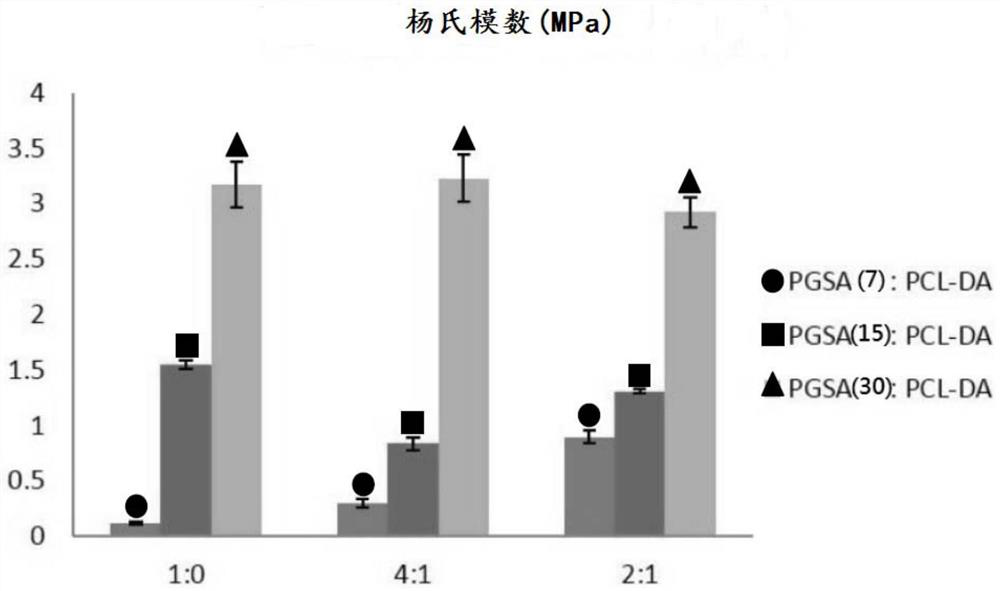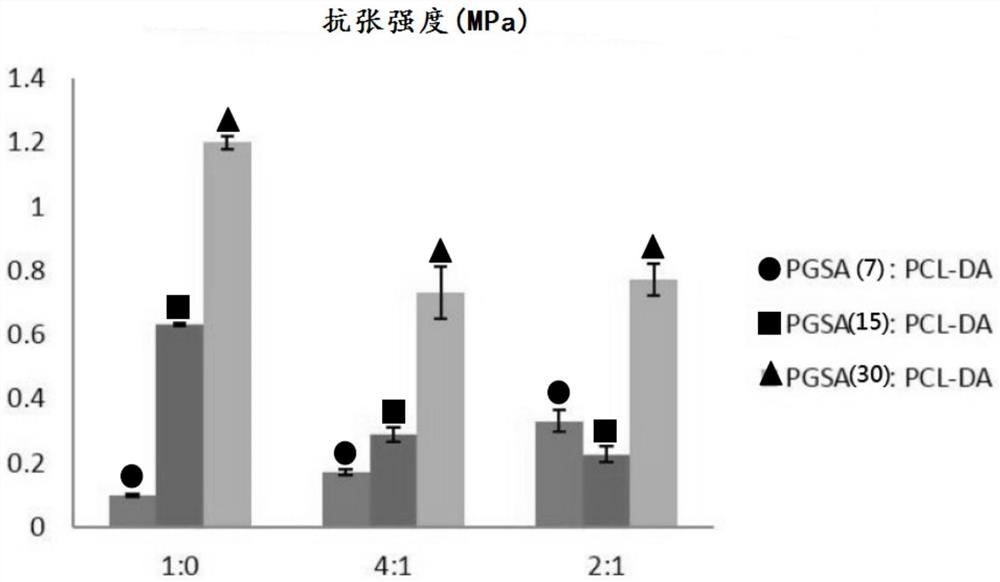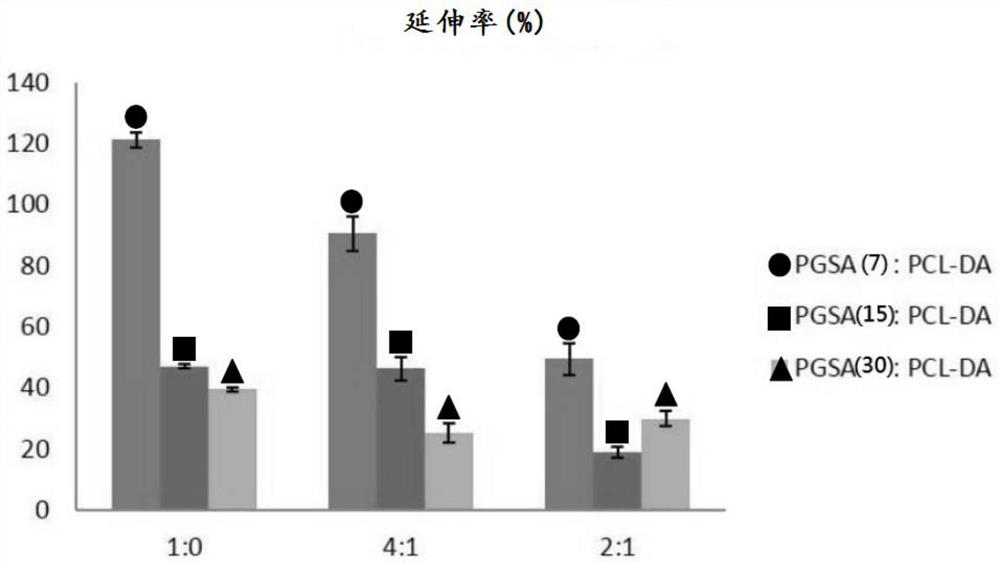Biodegradable photopolymerizable polymer composites and their applications
A layered manufacturing and composite material technology, applied in tissue regeneration, additive processing, prostheses, etc., can solve the problems of softness, hardness and elasticity that are difficult to control, degradation characteristics are not easy to predict, and material forming is not easy, so as to reduce the inconvenience of use The effect of design constraints with
- Summary
- Abstract
- Description
- Claims
- Application Information
AI Technical Summary
Problems solved by technology
Method used
Image
Examples
Embodiment Construction
[0028] A biodegradable photopolymerizable polymer composite material that can be manufactured by lamination, which includes PGSA (Poly (glycerol sebacate acrylate)), a photoinitiator, and a photoinitiator selected from PCL-DA (Polycaprolactone-diacrylate), PEG-DA (Polyethyleneglycol -diacrylate), the PGSA has a degree of acrylation preferably between 5% and 60%, more preferably between 7% and 30%.
[0029] The PGSA, PCL-DA and PEG-DA used in the present invention are all materials with biocompatibility and good degradability, and the present invention selects PCL-DA and PEG-DA containing acrylic acid group (Diarcylate, DA) to make PGSA, After PCL-DA and PEG-DA are laminated and formed by light, a better cross-linked network can be formed between the material molecules.
[0030] The photoinitiator used in the present invention preferably also has biocompatibility, which is mainly a component that can make the material photocurable when the present invention is manufactured by l...
PUM
| Property | Measurement | Unit |
|---|---|---|
| modulus | aaaaa | aaaaa |
| tensile strength | aaaaa | aaaaa |
| modulus | aaaaa | aaaaa |
Abstract
Description
Claims
Application Information
 Login to View More
Login to View More - R&D
- Intellectual Property
- Life Sciences
- Materials
- Tech Scout
- Unparalleled Data Quality
- Higher Quality Content
- 60% Fewer Hallucinations
Browse by: Latest US Patents, China's latest patents, Technical Efficacy Thesaurus, Application Domain, Technology Topic, Popular Technical Reports.
© 2025 PatSnap. All rights reserved.Legal|Privacy policy|Modern Slavery Act Transparency Statement|Sitemap|About US| Contact US: help@patsnap.com



